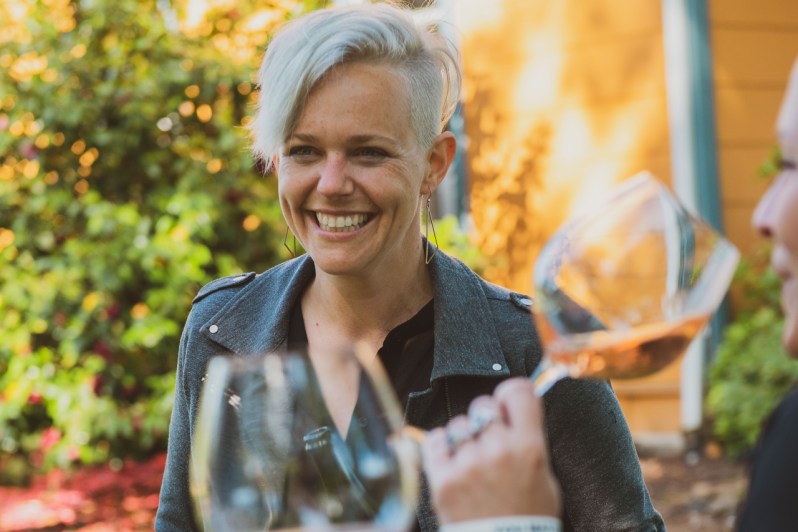We are waist-deep in Pride month and the festivities continue. Among the most noteworthy events this month is Queer Wine Fest, the first official gathering of its kind ever, taking place in the Willamette Valley at the end of this week.
On June 24, Remy Drabkin of Remy Wines will host the event at her Dundee Hills tasting room. It’s the eponymous label launched by Drabkin, a beloved Oregon winemaker who is both queer and currently serving as the interim mayor of McMinnville, Oregon, just to name a few of her many merits. Some 18 queer-run wineries will take part, pouring their work and taking in some of the wine industry spotlight, so often reserved for, well, the old, straight, and wealthy white male camp.

“I am most excited that Queer Wine Fest will provide an opportunity for queer voices to be heard and will create a professional network for the queer community in wine that has never existed before,” Drabkin said. “Queer Wine Fest is a jumping-off point for the many ways the wine industry can better honor and represent LGBTQ+ people.”
The event did not happen overnight, of course. The impetus came from one of Drabkin’s co-workers, Erin Butler. The two talked at length about the next steps with Wine Country Pride (WCP), something Drabkin created in 2020. The gatherings were getting bigger, and the movement was gaining steam. Hence, a grand event. “We wanted to continue to do work at the winery amplifying the LGBTQ+ community and it felt like a natural fit to build a fundraiser for WCP’s ongoing work.”
Drabkin said early on, there were conversations about the wine industry’s oppressive habits of ratings and judgment. After all, this is an industry that only recently began honoring the work of its Black members, Latinx members, indigenous members, and the like. Obscure varietals and winemaking styles are more in fashion than ever, so why shouldn’t a marginalized winemaking community be in the mix? Drabkin put out an open letter, inviting wineries that were queer-owned, queer-made, or queer-grown to her picturesque property for the festival. Queer Wine Fest was born.
It’s all part of a larger movement that’s finally elevating the unsung communities that were always there to begin with, and now they feel welcome enough to join. Drabkin knows as well as anybody, working in an industry that’s historically depended on vineyard workers operating essentially in the shadows. Moreover, it tends to go down in rural areas known for their conservative stances. But, it’s bigger than all of that.
“It’s important to remember that when we’re talking about the queer community, we’re talking about everybody,” she said. “You’ve all probably heard the word intersectionality. Queer people are black, white, brown, democrat, republican, old, young, all religions, every nationality, and live at every income level. I think we’ve been waiting for queer leadership in wine to emerge, and we’ve been waiting for it to be safe enough.”
While the Willamette Valley is home to progressive Portland, that doesn’t mean there are no systemic problems at play. As Drabkin said, “The patriarchal and heteronormative legacies upheld in wine are still deeply felt by our community.”

The festival is just the beginning and will surely grow in the future. “We have to keep addressing equity issues, and I look forward to hearing back from the queer wine community about how they want to see this event grow and develop,” Drabkin added.
What else can an industry so often focused on tradition do to change its ways for the better? As Drabkin said, make your presence felt. “You have to show up, and you have to support our businesses,” she said, frankly. “Please follow queer wine professionals on social media, and if you’ve never tried my wines or the wines of other queer winemakers, put in an order so that we can continue to do this work!”
Again, it’s all about momentum. “This is just the beginning, and we hope it’s a launching pad for a strong queer professional wine network,” Drabkin said. “We’re just so excited to highlight how the queer community has contributed to the world of wine.”


